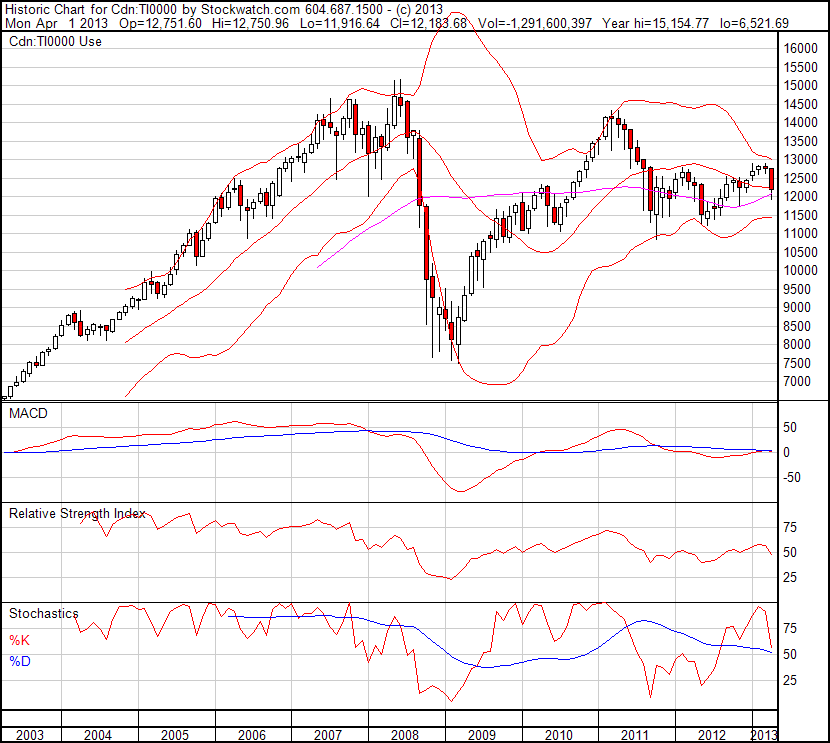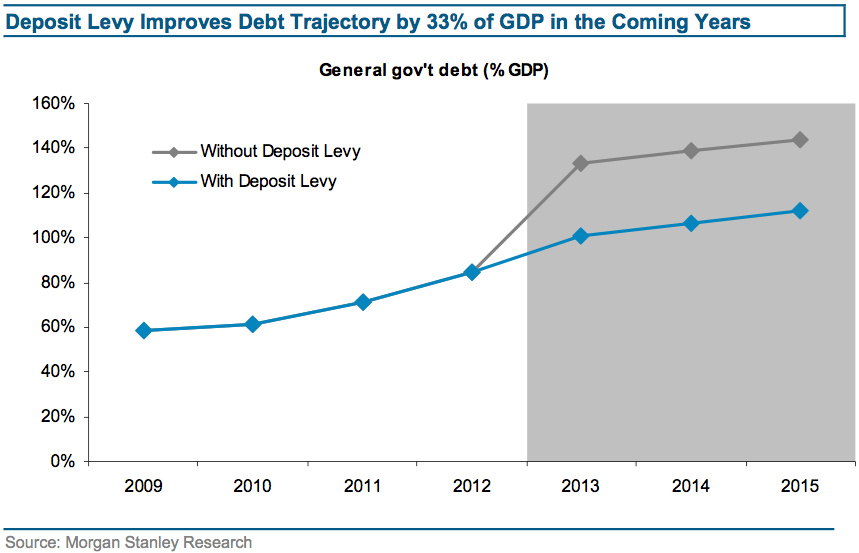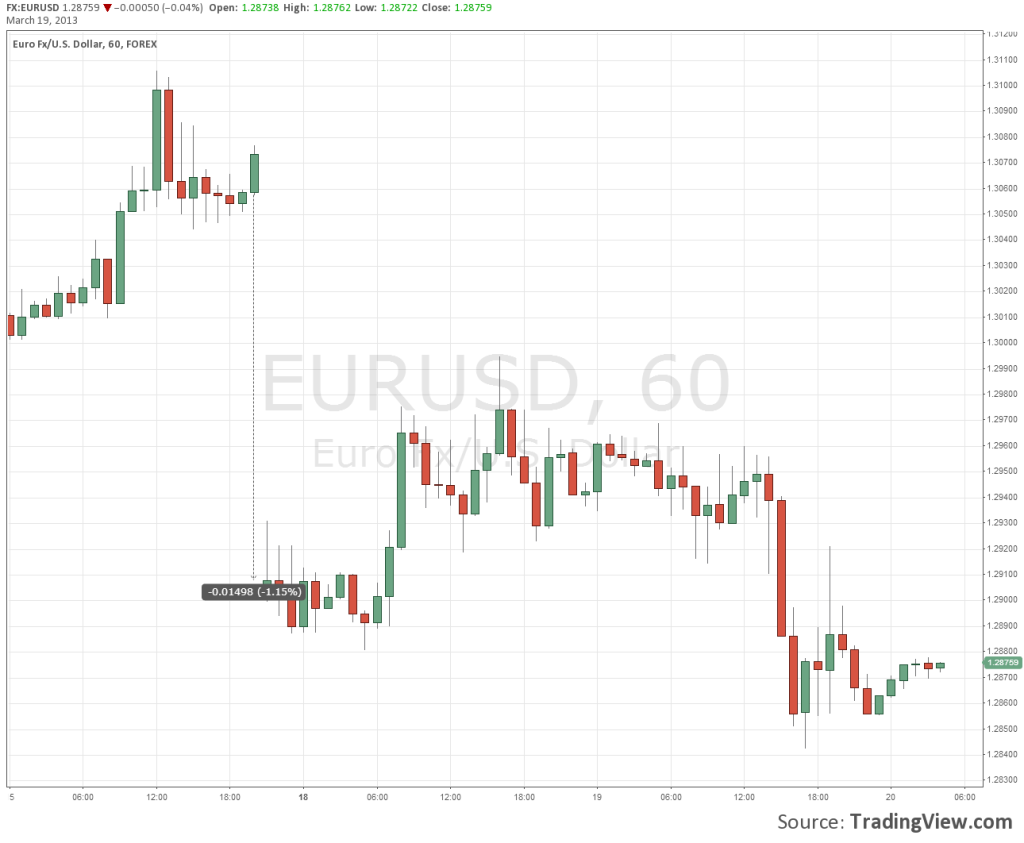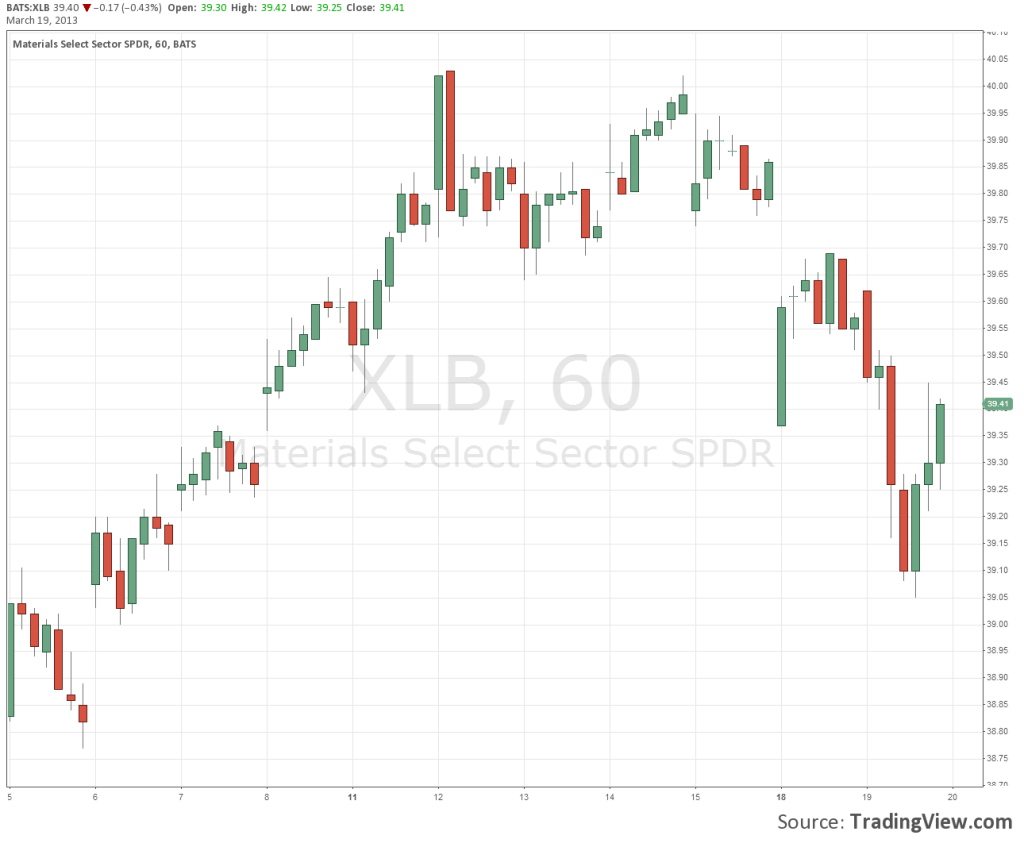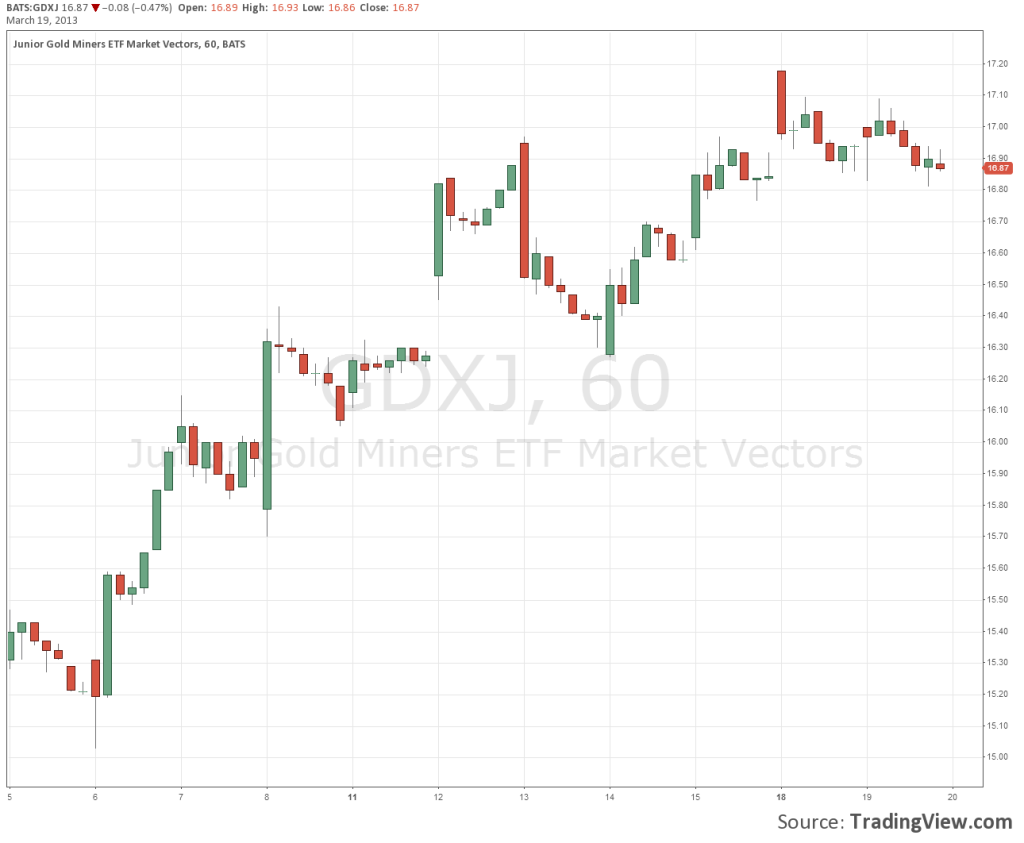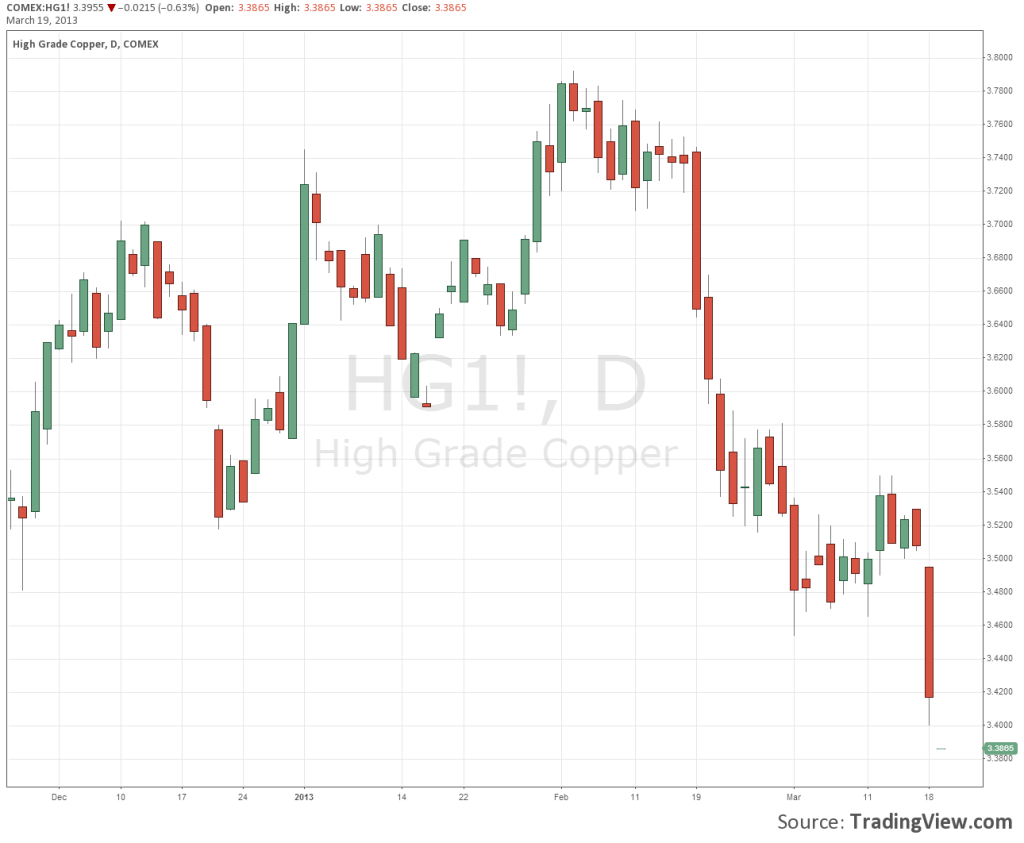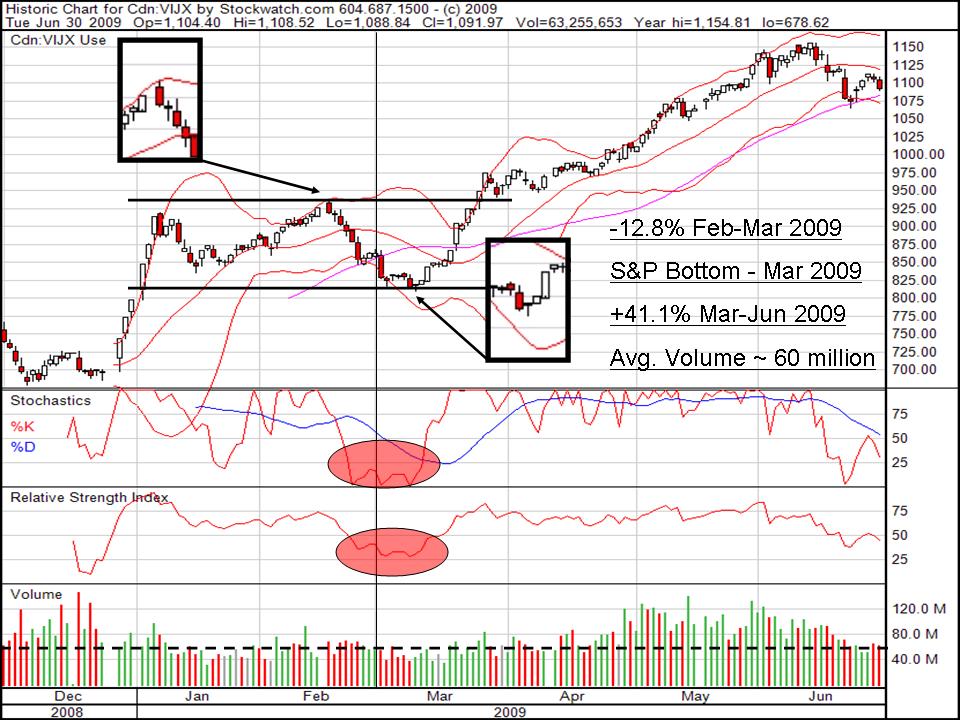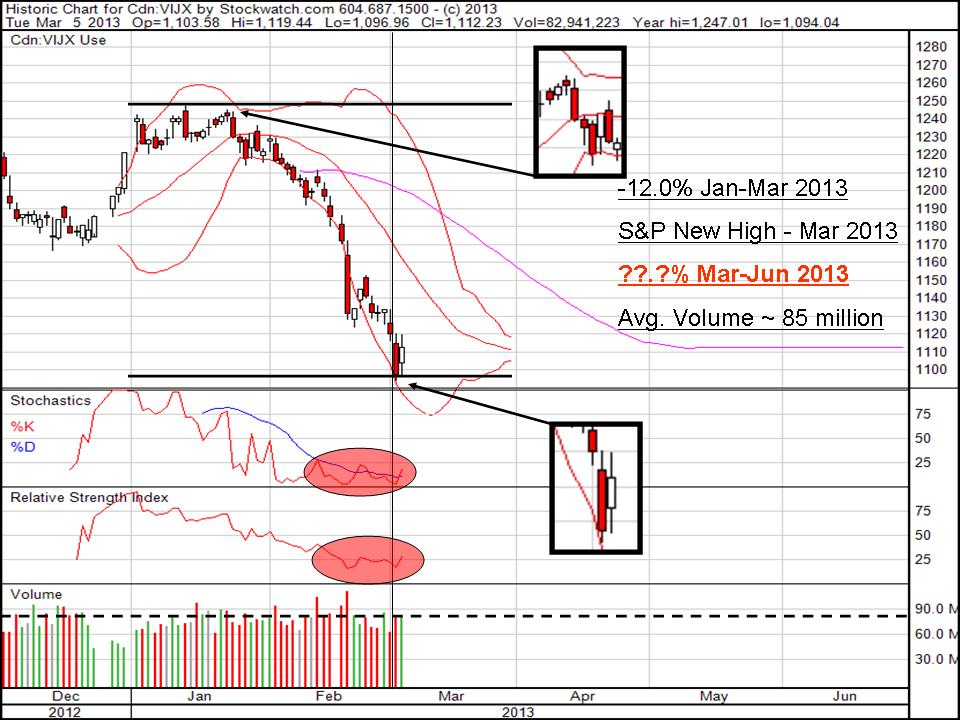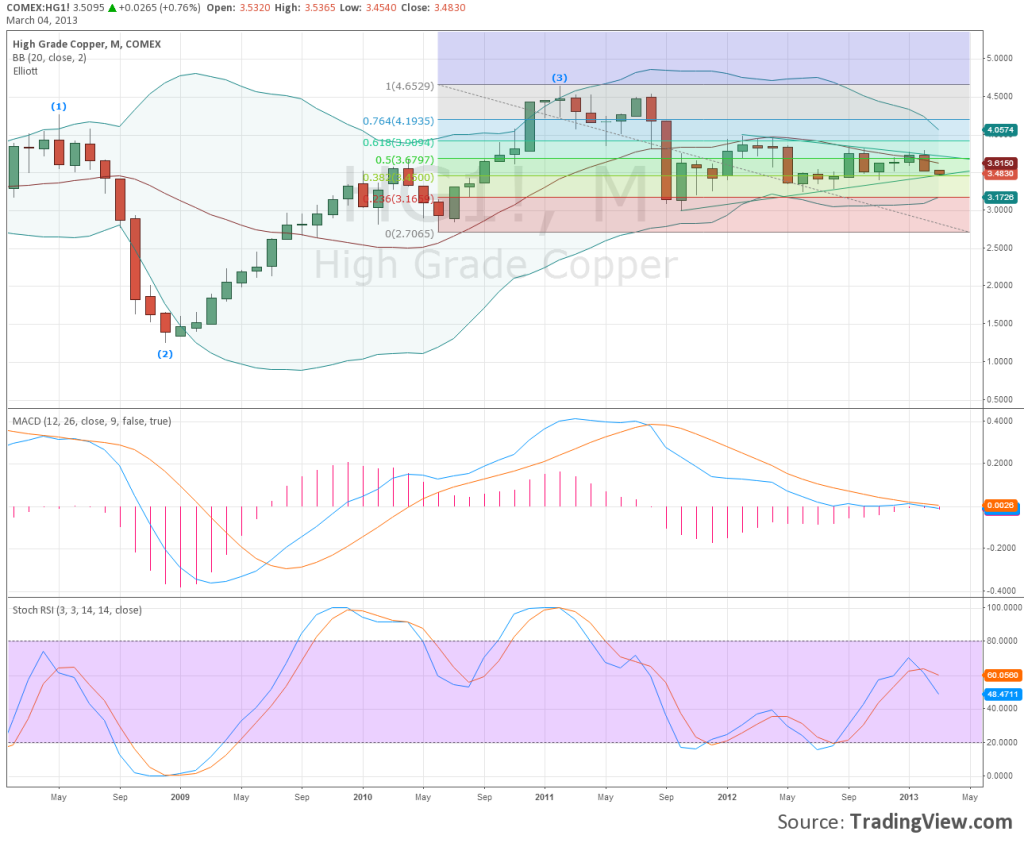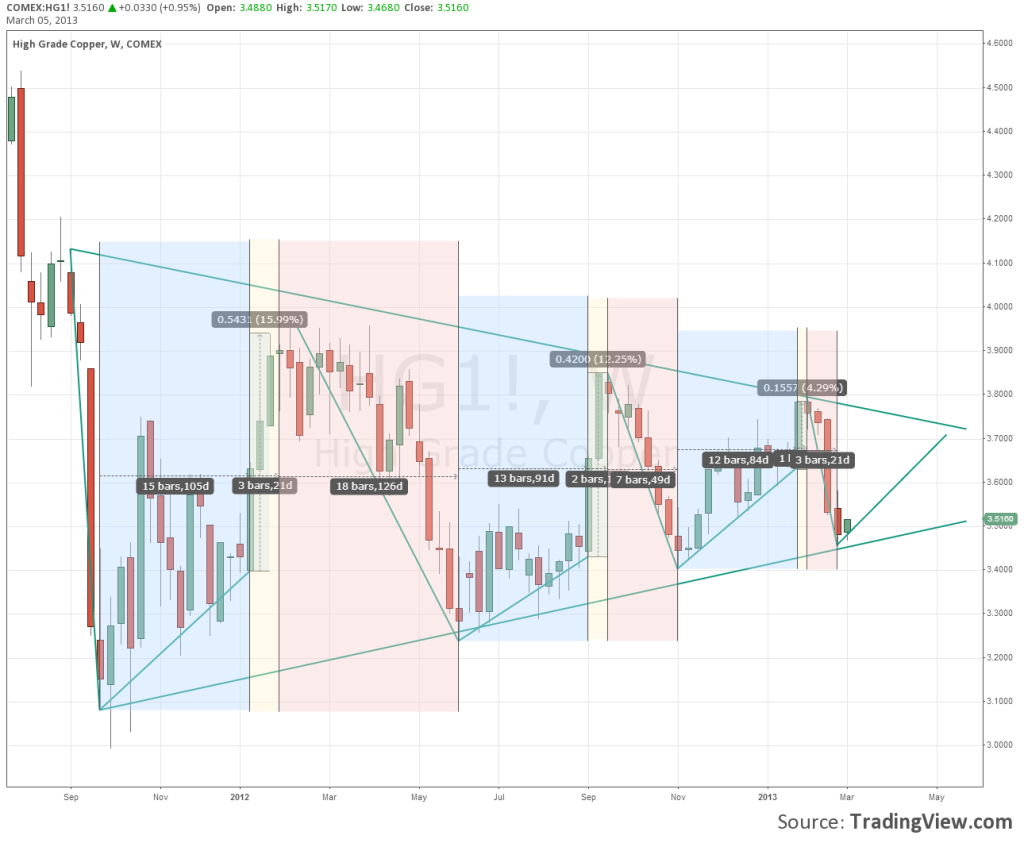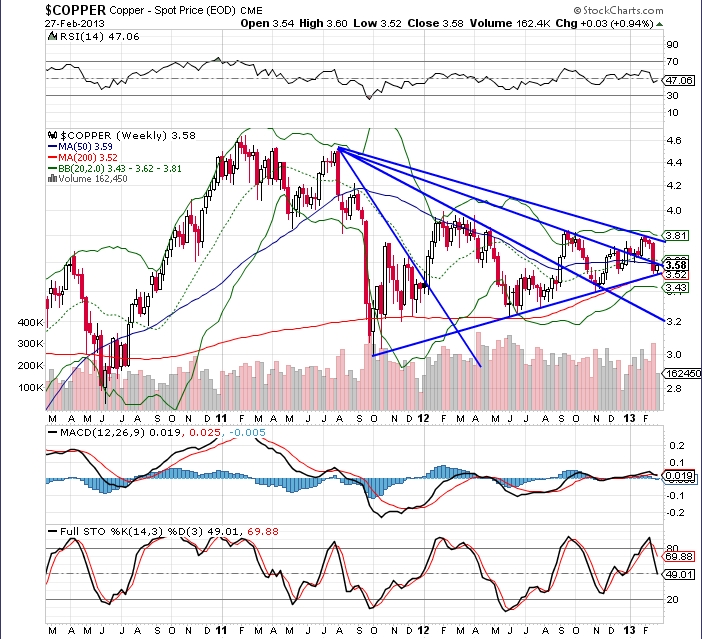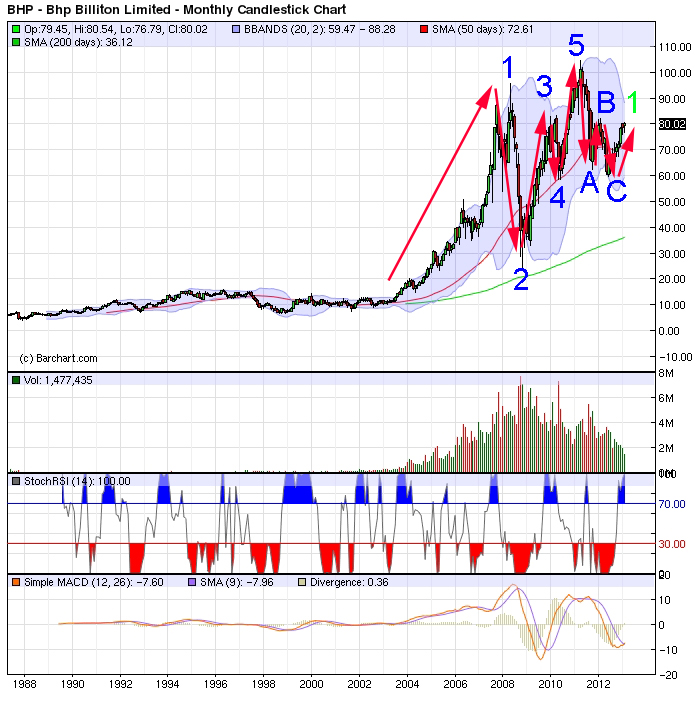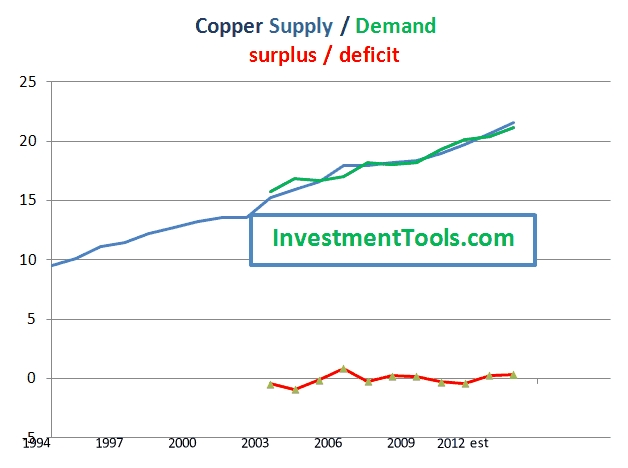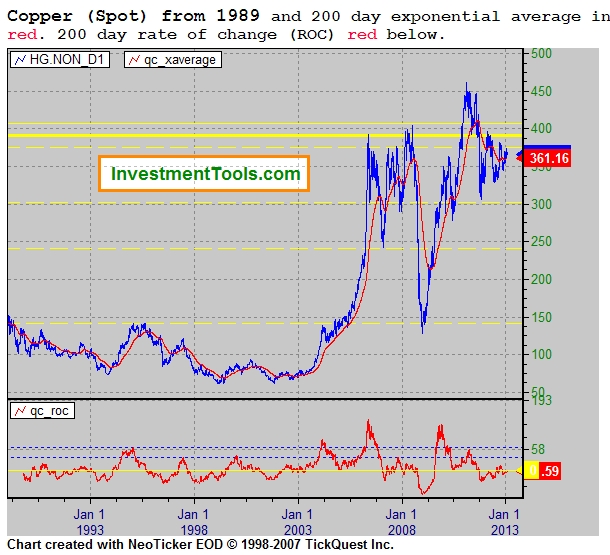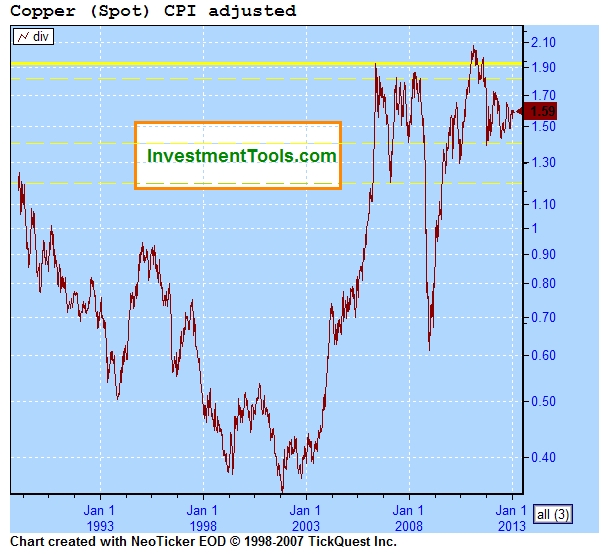Posts Tagged ‘Commodities’
A Closer Look at Gold & Silver (and Commodities in General)
Posted by nexvucapital on November 28, 2013
Posted in Uncategorized | Tagged: Commodities, Gold, silver | Leave a Comment »
TSX Composite: First Higher High / Higher Low Combo Since 2008?
Posted by nexvucapital on April 24, 2013
We note that in the 10 Year monthly chart for the S&P/TSX Composite we may be seeing our first higher high/higher low combination since the first half of 2008…that’s 5 painful years for those who are counting and a move off this current bottom and up through 13,000 is generally required for confirmation of the trend…
Posted in Uncategorized | Tagged: Canada, Commodities, cyclicals, economy, tsx | Leave a Comment »
Cyprus Circus: This Movie Has Some Twists
Posted by nexvucapital on March 20, 2013
We try to stay focused on the long-term and the big picture and most certainly the Cyprus Circus will have a shorter run in the markets than the Greek Tragedy but OMG this is way more interesting. The best value opportunity coming out of this crisis will be the movie rights. Market wise, the Base Metals sector seems to be putting in a selling climax during this event.
Cyprus is a country of 1 million people and its economy makes up 0.2% of the EU economy and Cyprus has a problem because both the government and the banks need a bailout (distinct from Spain for instance where it is the banks that need the bailout). The path to insolvency for Cyprus was paved by the failure to diversify and is a direct result of the Greek Tragedy. The banks of Cyprus hold large amounts of both Greek and Cypriot government debt – ooops! The government of Cyprus also owns large amounts of Greek debt – so this is our first EU contagion so-to-speak. When Greek debt was re-structured during the Greek bailout this had a negative effective on the bank and government balance sheets of Cyprus.
In this circumstance a public/private debt crisis has afflicted the nation and so Cyprus had no choice but to pursue external help and this is where the story gets interesting. For those unfamiliar, Cyprus is a favourite off-shore tax-haven for Russian and Ukrainian money (~30 Billion Euros worth). Russian corporate taxes run around 20% and Cypriot corporate taxes are 10% …nough said. The source of some of this Russian and Ukrainian money brings some spice to this story with a colourful cast of characters including mobsters and oligarchs – is that redundant btw?
Long-story-short…Cyprus went to the Eurogroup, the ECB and IMF (the Troika) and asked for a bailout. The Troika proposed that stakeholders in Cypriot Banks needed to contribute to the bailout as the amount of the bailout (~16 Billion Euros) if added to current Cypriot government debt (traditional government bailout) would make the government balance sheet impossible to service. Whereas, an approximately 6 Billion Euro contribution from Cypriot bank stakeholders would reduce the burden on the government balance sheet and allow for Cyprus to achieve a more manageable long-term Debt to GDP ratio of less than 100%.
Those contributing to the tax were to receive equity in the the banks and half the amount was to be guaranteed by future natural gas revenues. As an aside: in my humble opinion the bank shares and NG revenue sharing would probably be a better long-term holding than cash.
Well all that sounds reasonable until the decision was announced: bond-holders would be protected and all deposit holders would pay a one-time deposit tax of 6.75% on accounts under 100,000 Euros and ~10% on accounts over 100,000 Euros. Sounds like something from Monopoly.
The problems created here were two-fold:
- Bank Deposits under 100,000 in Cyprus were supposed to fall under the states Depositor Insurance Program
- That little issue with the Russian and Ukrainian deposits being ~30 Billion Euro of the +60 Billion Euro total in Cypriot banks deposits
Side note: Cyprus is currently in negotiations on an extension for a $2.5 Billion loan from Russia that is coming due…timing is everything.
Fast Forward: On Tuesday, the Cypriot Parliament rejected the bailout with not a single vote in favour (heh maybe Washington could end its political stalemates if it added angry mobs and mobsters to the mix) and now we head back to the negotiation process…stay tuned.
As for the markets:
Nothing effects our long-term thinking that the US is leading what will be a global growth cycle (yah – including the EU at some point as these are reset events not end-of-the-world events). The immediate effect of the Cyprus Circus is reflected in the EUR/USD pair:
The materials sector was hit but was due for a correction:
Interesting, we see little effect in the Gold Juniors which have been outperforming the Gold Seniors of late (most junior resource companies have been showing a pulse lately – wink wink):
Copper was hit but this has the appearance of a selling climax as copper has been correcting on China…and if the HSBC PMI comes in better this week we expect the SSEC and copper to react in a positive manner:
Posted in Uncategorized | Tagged: bailout, Commodities, Copper, cyprus, Debt, economy, eu, Euro, imf, markets, politics | Leave a Comment »
Global Growth Update: A World of Secular Economic Growth
Posted by nexvucapital on March 8, 2013
We have several themes for debate as our world returns to a period of secular economic growth (this is long-term stuff so day-traders move on):
The USA is entering a secular period of above average economic prosperity after a decade plus of working off the excess:
- has the most productive labour force
- is already automated
- has a ready supply of cheap manufacturing capacity (land)
- is entering a sustained period of strategic energy advantage
- has plentiful other natural resources
- has incredible technical creativity
China will speed up its timetable for urbanization and industrialization:
- faces a critical ten year period within which to get its urban/industrial population into a ratio that can support its ageing population
- current urban density numbers are wrong as they include migrant workers and therefore ~400 million people need to move into urban centres over 10 years
- btw – this is why they build the urban areas before they move the people (living in a tent sucks)
- btw – this is why they are pushing down urban real estate prices (residential affordability is an issue for an urbanizing society)
- btw – they recognize these issues and if you have not noticed these folks are organized and have a plan
Europe will continue down the slow path toward a true economic union:
- see the creation of the USA from 1776 forward
- failure here will result in the failure of the EU period and that is not an option (they have demonstrated this)
- then Europe faces its real issue – offsetting its ageing population with immigration (that should be interesting)
- Note: Spain is actually in the enviable position of having a large pool of unemployed skilled workers
The 30 year waterfall of new entrants into the global skilled labour pool from China, India and the Former Soviet Union (FSU) is over:
- the global skilled labour pool has more than doubled in the past +30 years
- real wages for the skilled workers of the world are about to rise and with it the economic power of the global middle class
- Sub-Saharan Africa is the last large untapped labour pool and represents a small percentage of the 3.0 billion current skilled labour pool
- the excess rents paid to the capital component of the three factors of production (Land, Labour and Capital) is about to be shared more equitably with Labour
- the next big issue will be a shrinking global labour pool and the rise of collective labour activity in China, India and the FSU
The current Debt/Deficit to GDP issues in the developed and developing world are going to be reduced via growth over time (see 1950 to 1965):
- firstly, these debts were necessary to avoid a global economic catastrophe
- fiscal discipline is the mantra of the voting populations (delicate now) of the consistent economic performers in the developed world
- subsequently, politicians in these regions will be forced to exercise fiscal discipline by their populations
- contrary to current economic prognosticators the revenue side can be increased by raising taxes (this is debatable) and/or by increased taxable incomes
- the expenditure side will move toward deficit reduction as increasing real wages will offset the 30 year effort by government to subsidize wages via entitlements etc. while the distortions in the global skilled labour pool (see above) worked their way through the system
In conclusion, despite the best efforts of governments around the world to interfere in the market mechanism for handling secular shocks the markets are a force of nature and never discount the human need to make life better for our offspring (btw – another force of nature).
Posted in Uncategorized | Tagged: bull markets, capital, Commodities, Debt, Economics, economy, global growth, government, industrialization, labour, land, markets, politics, Population, urbanization | Leave a Comment »
Equity Update: Canadian Junior Resource
Posted by nexvucapital on March 6, 2013
For our friends who have suffered through a 24 month vicious bear on the Canadian Junior Resource Market (TSX Venture Index) we draw your attention to the comparative charts below. The first chart is for the period December 31, 2008 to June 30, 2009 and the second chart is for the same period in 2012-2013. The focus is on the January to March period within each chart where we see some striking similarities:
- similar topping and bottoming formations
- similar Stochastics and RSI bottoming patterns (note the %K-%D crosses)
- similar top to bottom losses: 12.8% in 2009 and 12.0% in 2013
And a few differences:
- average daily volumes are significantly higher in 2013 than 2009
- major US indexes were putting in bear market bottoms in 2009 and are making new highs in 2013
- from the March bottom, the TSX Venture Index rose +41% through to June 2009
Posted in Uncategorized | Tagged: Commodities, Copper, economy, equities, Gold, oil, resource, silver | Leave a Comment »
World’s Largest Commodity Company and the Next Leg of the Super Cycle?
Posted by nexvucapital on February 19, 2013
We prefer long charts…so we present the 25 year monthly chart for BHP – the world’s largest commodity company. This chart reflects where we sit in the commodity super cycle. A few points to consider:
- no one cared about commodities until the early part of the last decade (basing pattern from 1988 to 2003)
- the first phase in the Super Cycle traced a 5 wave pattern (1-5)
- this was followed by a normal ABC correction (ABC)
- note the C corrective wave halted at the same point as the #4 corrective wave
- the price appears to be initiating the second phase of the Super Cycle (a NEW 5 wave pattern currently in wave #1)
- the current upwave #1 is at the resistance point of original upwave #3 and corrective upwave B at $80.00 (this is a key breakout point)
- NOTICE the MACD is currently crossing over as it last did at the bottom of the 2008-2009 correction
Posted in Uncategorized | Tagged: BHP, china, Commodities, Copper, economy, energy, growth, markets, super cycle | Leave a Comment »
Copper Cycle & China Growth
Posted by nexvucapital on February 18, 2013
A must read from Bernstein Research: China’s industrial behemoth with bones like iron bars – fuelled by inexpensive labour for how long?
Posted in Uncategorized | Tagged: Cheap Labour, china, Commodities, Copper, economy, growth | Leave a Comment »
Ross Beaty: We’ll See Price & Supply Shocks In Metals This Year; Here Are The Reasons Why
Posted by nexvucapital on February 1, 2013
An excellent Interview with a thought leader in the Resource Sector:
http://bullmarketthinking.com/ross-beaty-well-see-price-here-are-the-reasons-why/
Posted in Uncategorized | Tagged: Commodities, demand, resource sector, Ross Beaty, supply | Leave a Comment »

